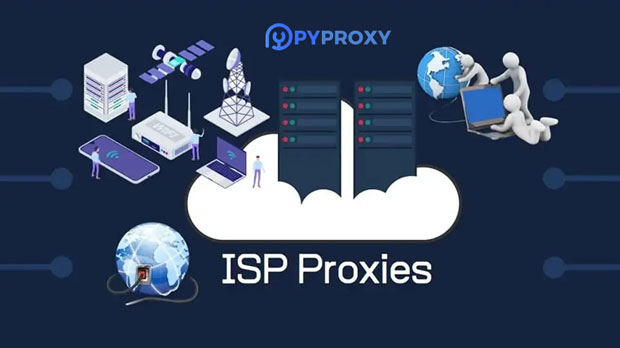When choosing a proxy service, Hide My Ass offers both dedicated and shared proxies, each with its own set of advantages and drawbacks, especially in terms of pricing. Dedicated proxies are usually priced higher than shared proxies, but they provide exclusive access to an IP address, offering greater privacy, speed, and security. On the other hand, shared proxies are more affordable because multiple users share the same IP address. This article will delve into the key differences in pricing between Hide My Ass dedicated and shared proxies, highlighting the benefits and limitations of each, so customers can make an informed decision based on their specific needs. Introduction: Understanding Proxies and Their ImportanceProxies are essential tools for anyone looking to browse the internet privately, access geo-restricted content, or improve browsing performance. Whether you're an individual user seeking anonymity or a business aiming to manage multiple online tasks, proxies can be indispensable. Hide My Ass, a well-known provider of proxy services, offers two primary types: dedicated proxies and shared proxies. The price difference between these two types is significant, and understanding what each option offers is crucial to making an informed choice.What are Dedicated Proxies?Dedicated proxies, as the name suggests, are private proxies assigned to a single user. These proxies provide exclusive use of an IP address, ensuring that no one else is using it simultaneously. This exclusivity means that dedicated proxies offer several advantages, particularly in terms of performance and security.Key Features of Dedicated Proxies- Exclusivity: The main feature of a dedicated proxy is that it is dedicated to a single user. No other person will use the IP address assigned to you, ensuring that your online activity is private and secure.- High Speed and Reliability: Since you are the only user of the proxy, there is no congestion caused by other users, leading to faster speeds and more reliable connections.- Better Security: Dedicated proxies offer enhanced security compared to shared proxies. With no other users sharing the same IP address, the risk of security breaches, such as IP blacklisting, is greatly reduced.- No Bandwidth Limitation: Dedicated proxies often come with higher bandwidth limits, allowing users to perform data-heavy tasks like web scraping or running multiple accounts without interruptions.Price Range of Dedicated ProxiesGiven the exclusivity, dedicated proxies tend to be more expensive than shared proxies. Prices vary depending on factors such as the number of proxies purchased, the geographical location of the IPs, and the subscription duration. Generally, dedicated proxies are priced in a way that reflects their value, especially for users who require consistent performance and enhanced privacy.What are Shared Proxies?Shared proxies, unlike dedicated ones, are used by multiple users simultaneously. This means that the same IP address is shared by several people, which can lead to slower speeds and a lower level of privacy. However, shared proxies are significantly cheaper than dedicated proxies, making them a more budget-friendly option.Key Features of Shared Proxies- Cost-Effective: Shared proxies are much cheaper than dedicated proxies because the cost of the IP address is divided among several users.- Slower Speed: Since multiple users share the same IP address, there may be slower speeds, especially during peak usage times. This can be an issue for users who require high-speed connections for tasks like streaming or web scraping.- Shared Security Risks: With shared proxies, the activities of other users sharing the same IP address can potentially affect your privacy. If one user engages in illegal or unethical activities, the shared IP could be flagged or blacklisted, affecting all users.- Limited Performance for Heavy Tasks: For tasks that require heavy data processing or multiple simultaneous connections, shared proxies may not provide the necessary performance, as the bandwidth is shared among all users.Price Range of Shared ProxiesShared proxies are much more affordable than dedicated proxies, making them an attractive option for users on a budget. Since multiple users share the same IP address, the price is divided, reducing the overall cost. However, the price difference comes with trade-offs in terms of performance and privacy.Comparing Dedicated and Shared Proxies in Terms of PricingThe price difference between dedicated and shared proxies is mainly due to the level of exclusivity, speed, and security offered by each type. Below is a comparison:- Dedicated Proxies: Generally, they are more expensive due to the exclusivity of the IP address, enhanced speed, and security. Dedicated proxies are suitable for businesses or individuals who need reliable and secure connections for tasks like web scraping, managing multiple accounts, or performing high-volume data transfers.- Shared Proxies: These are much cheaper since the cost of the proxy is split among several users. However, they come with limitations in speed and privacy. Shared proxies are ideal for general browsing or light tasks where speed and security are not the primary concern.Which Proxy is Right for You? A Cost-Effectiveness AnalysisWhen deciding between dedicated and shared proxies, the decision largely depends on your specific needs and budget:- Go for Dedicated Proxies if: - You require high-speed internet for tasks like web scraping, streaming, or gaming. - Privacy and security are important to you, and you want to avoid the risk of IP blacklisting. - You’re running a business that depends on multiple accounts or large-scale data scraping.- Go for Shared Proxies if: - You’re looking for a more affordable option and don’t need high-speed performance. - Privacy and security are not top priorities for your tasks. - You only need proxies for general browsing or light web activities.Conclusion: Making the Best ChoiceBoth Hide My Ass dedicated and shared proxies offer distinct advantages, but they come at different price points. The choice between the two depends on the nature of your tasks, your budget, and your need for privacy, speed, and reliability. While dedicated proxies provide more value for users who require exclusive access and enhanced security, shared proxies offer a budget-friendly solution for those with less demanding needs. By carefully considering the key differences, you can make the right choice for your proxy requirements.
Jul 25, 2025


































































